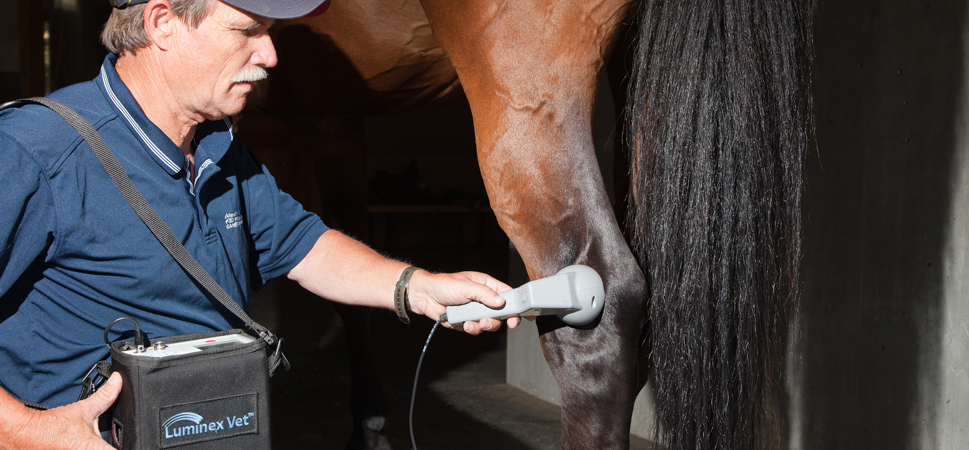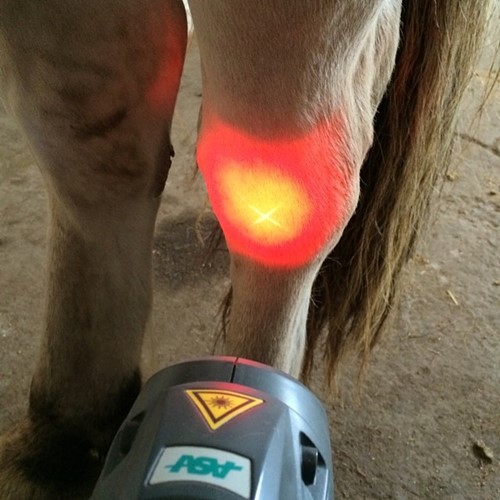Equine Therapy for Injury Healing: How Steeds Help Heal Emotional Wounds
Reviewing the Effectiveness of Laser Therapy in Equine Therapy for Injury Rehabilitation
The analysis of laser therapy's performance in equine injury rehabilitation depends upon multiple variables, including recovery time, discomfort reduction, and tissue regrowth. Professional research studies suggest notable enhancements in problems like tendonitis and osteoarthritis, connected to enhanced mobile feature and raised ATP manufacturing. Vets often observe superior outcomes with laser therapy compared to conventional techniques, positioning it as a critical element in equine treatment. The need for constant monitoring and personalized therapy strategies can not be overemphasized. What particular clinical evidence supports these cases, and just how do veterinarians apply these procedures in technique?
Comprehending Laser Treatment
Laser treatment has actually come to be a pivotal device in vet medication, especially in the therapy of equine conditions. Known for its non-invasive nature and efficiency, laser treatment entails the application of particular wavelengths of light to promote tissue repair and lower swelling. This healing technique is increasingly favored for its capability to increase the recovery process in equines dealing with a selection of bone and joint injuries and chronic conditions.
The main mechanism behind laser treatment is its ability to improve mobile functions. When laser light passes through the skin, it is absorbed by mitochondria, the giant of cells, which brings about boosted production of adenosine triphosphate (ATP) This biochemical energy increase helps with cellular repair and regrowth. In addition, laser therapy advertises vasodilation, boosting blood flow and oxygen shipment to broken tissues, hence expediting healing.
In equine medication, laser therapy is particularly useful for conditions such as tendonitis, osteoarthritis, and wound healing. The strategy is lauded for its pain-relieving residential or commercial properties, enabling steeds to restore movement and feature extra rapidly. Vets also appreciate its minimal adverse effects compared to various other treatment methods, making it a reliable and risk-free alternative for equine treatment.

Exactly How Laser Treatment Functions

Upon absorption, these photons cause a collection of biochemical changes, boosting mitochondrial feature and resulting in boosted adenosine triphosphate (ATP) production. This increase in ATP increases cellular metabolism, advertising cells repair service and regrowth. Furthermore, laser treatment regulates inflammatory feedbacks by affecting cytokine degrees and minimizing oxidative stress, consequently reducing pain and swelling.
Another considerable facet of laser treatment is its function in boosting microcirculation. The therapy advertises vasodilation, boosting web link blood circulation and oxygen distribution to broken tissues (Equine Therapy). This promotes the removal of cellular particles and supports the proliferation of fibroblasts and collagen synthesis, important for injury healing
Clinical Evidence
The efficacy of laser treatment in equine therapy has actually been validated with different medical researches, showcasing its healing prospective throughout a series of problems. A number of regulated trials and empirical studies have documented considerable improvements in cells repair service, pain decrease, and general recovery timelines. As an example, a research carried out by Turner et al. (2012) demonstrated that steeds treated with low-level laser treatment (LLLT) for tendon injuries exhibited increased healing compared to those obtaining traditional treatments. The study highlighted a marked reduction in inflammation and boosted collagen development.
In a similar way, study by Johnson and associates (2015) concentrated on equine muscular tissue injuries, exposing that laser therapy substantially expedited muscle fiber regrowth and decreased muscular tissue tightness. Medical assessments have revealed that laser treatment can minimize chronic conditions such as osteo arthritis.
Veterinarian Insights

Vets additionally value the versatility of laser therapy. It can be employed for a variety of problems, from surface injuries to much deeper bone and joint injuries. Dr. Emily Brown highlights its energy in dealing with conditions like tendonitis and osteo arthritis, where conventional therapies usually drop short. She mentions that laser therapy can be tailored to the details requirements of each steed, guaranteeing ideal outcomes.
Furthermore, vets value the capability to integrate laser therapy with other therapy methods. This multimodal approach can improve overall treatment efficiency, giving an extensive service for equine rehab. Such recommendations from experienced professionals underscore the growing approval and application of laser therapy in equine medication.
Practical Factors To Consider
A crucial element of executing laser therapy in equine therapy entails recognizing the useful considerations that ensure its efficiency and safety. It is crucial to choose the suitable laser device, as different kinds differ in wavelength, power, and infiltration depth. Vets must be well-versed in these specifications to tailor treatment protocols efficiently to each injury kind
Additionally, the frequency and period of laser treatment sessions need mindful preparation to take full advantage of healing benefits while lessening any kind of potential unfavorable effects. Constant surveillance of the steed's reaction to therapy can lead necessary modifications in the treatment routine. Establishing a safe and controlled setting throughout therapies is also necessary to see this site stop unintentional exposure to laser discharges, which can hurt both the steed and the trainer.
Educating and qualification of workers carrying out laser therapy are paramount to guarantee appropriate technique and to copyright safety and security criteria. In addition, maintaining accurate documents of each session, including laser settings and observed outcomes, is essential for examining the total effectiveness of the therapy and for making data-driven choices.
Final Thought
Laser treatment has arised as an effective method in equine injury recovery, offering considerable benefits in healing time, pain relief, and tissue healing. For optimal outcomes, continuous monitoring and personalized treatment protocols stay important in leveraging the full potential of laser therapy in equine care.